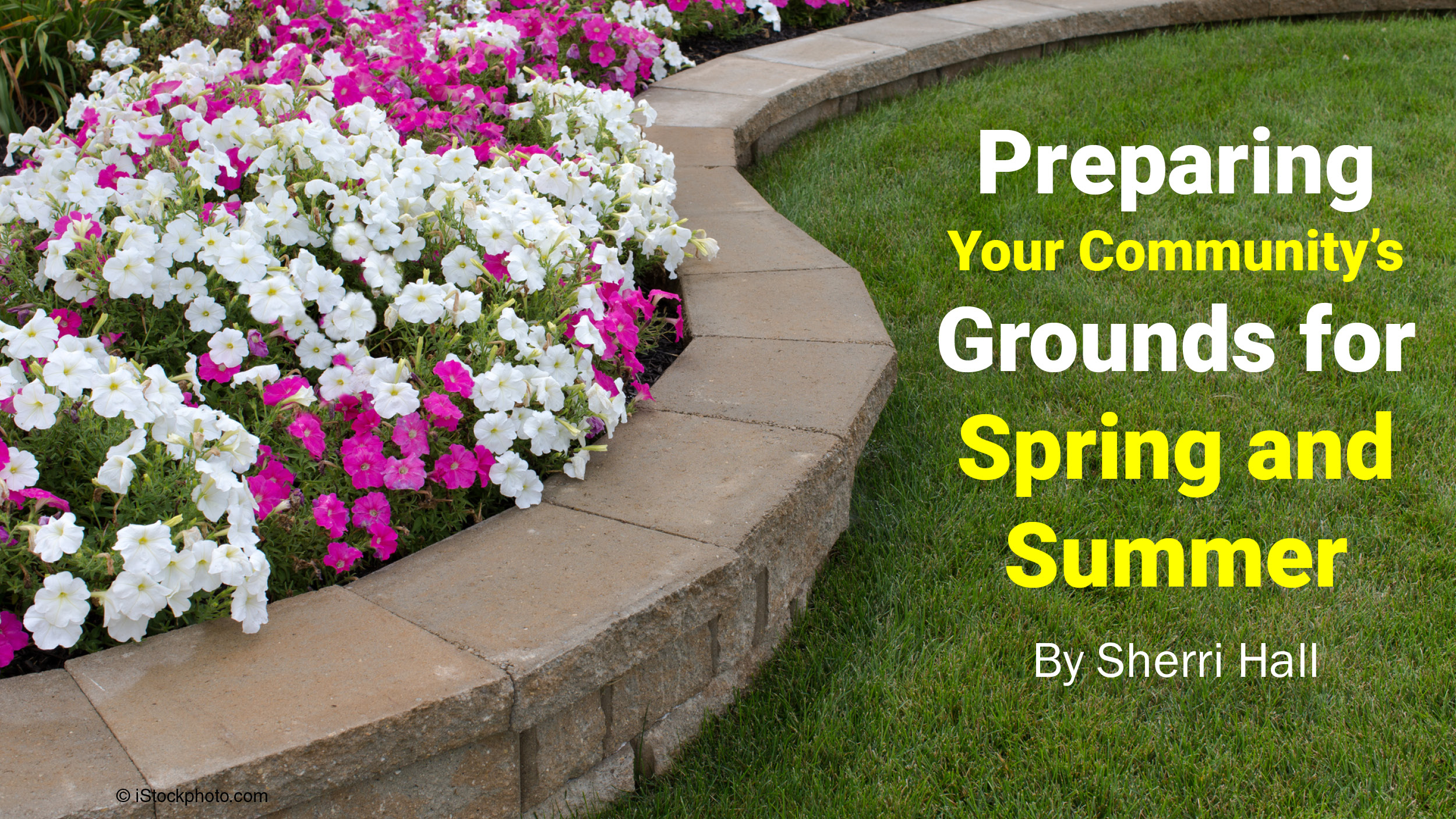
Preparing your Community’s Grounds for Spring and Summer
As winter comes to an end, associations are beginning to prepare for the warm weather spring and summer will bring. One item on everyone’s preparation list is ensuring the community’s outdoor areas are in tip top shape. We spoke to Aaron Kurdyla, Director of Operations for High Tech Landscapes, who took us through the process.
The first step, according to Kurdyla, is to make any repairs related to snow damage, such fixing areas where snow plows may have flipped some sod over and straightening up shrubs that may have been pushed by a snow pile. Once the repairs have been made, it’s time for spring clean-up to begin, he said.
Spring clean-up, which prepares the community for mowing season, involves cleaning up the curb lines and clearing accumulated debris such as branches and leaves. “It helps get the site ready for that first mowing,” said Kurdyla.
Following the spring clean-up comes the spring bed edging, Kurdyla noted, which is the process of redefining the bed edges throughout the property by using a mechanical edger. “It gives theproperty a neat, crisp look and allows it to pop a little bit more,” he said.
According to Kurdyla, it’s important to ensure that focal points within the community, such as the main entrance, clubhouse entrance and other roadway entrances, are addressed during the spring clean-up and bed edging. “The first impression is what makes the biggest impact,” he said. “You want to take care of those areas and make them stand out.”
With that being said, Kurdyla mentioned that small branches and random leaves found in the community’s back lawn areas can wait to be addressed during the time of the first mowing.
In addition to a community’s landscaped areas, the property’s common area hardscapes should also be cleaned up in preparation for the spring and summer seasons. For example, branches, leaves and other debris should be cleared from clubhouse patio areas, Kurdyla said. It’s also important to ensure that the seams of the pavers aren’t getting inundated with weed growth, he added.
Kurdyla explained that these areas only require general maintenance such as keeping them free of debris and weeds. “What’s great about hardscapes is that they pretty much take care of themselves,” he said.
Once the spring clean-up and bed edging are done, there are some routine maintenance items that are necessary throughout the warm-weather seasons. These include weed and turf control, such as application of crabgrass, pre-emergent and broadleaf weed sprays as well as fertilizers. Kurdyla said that these chemical treatments are vital when it comes to properly maintaining thegrounds. Additionally, having a consistent mowing schedule including sidewalk edging is also important for communities, he noted. “Some associations try to save money by cutting back on these items, but you want a consistent maintenance program because it makes the community look good overall,” said Kurdyla.
He recommended that an association be sure to include items in its landscape contract that it knows must be done, such as spring clean-up, bed edging, mowing, weeding, shrub pruning and chemical treatments. As far as mulching goes, Kurdyla suggested it as well, but since it is a higher-priced item, it can be done every other year rather than every year if necessary. “Mulching,” he explained, “helps the soil retain moisture, keeps the plants’ roots cool and helps with weed control. It also makes the area look more attractive.”
Projects that the association is not going to have done every year, such as pruning of hardwood trees and rejuvenation pruning, should not be put into the contract. Instead, said Kurdyla, an association should request a separate proposal for such items.
Kurdyla also recommended that the association review the community’s landscape specifications with the landscape contractor to determine if there is anything that may not be necessary or could be done for a separate price when needed as well as if there are less expensive options that can be used in place of certain items. This can benefit the association by saving money in the long run, he said.
The landscape contract can be renewed annually or on a long-term basis. “If you do a long-term contract with your vendor, you’re able to create more of a partnership on both sides,” noted Kurdyla. “I recommend a three-year contract. That way, you’re not going out to bid every year which can be a strain on your manager and one more thing for the board to worry about.”